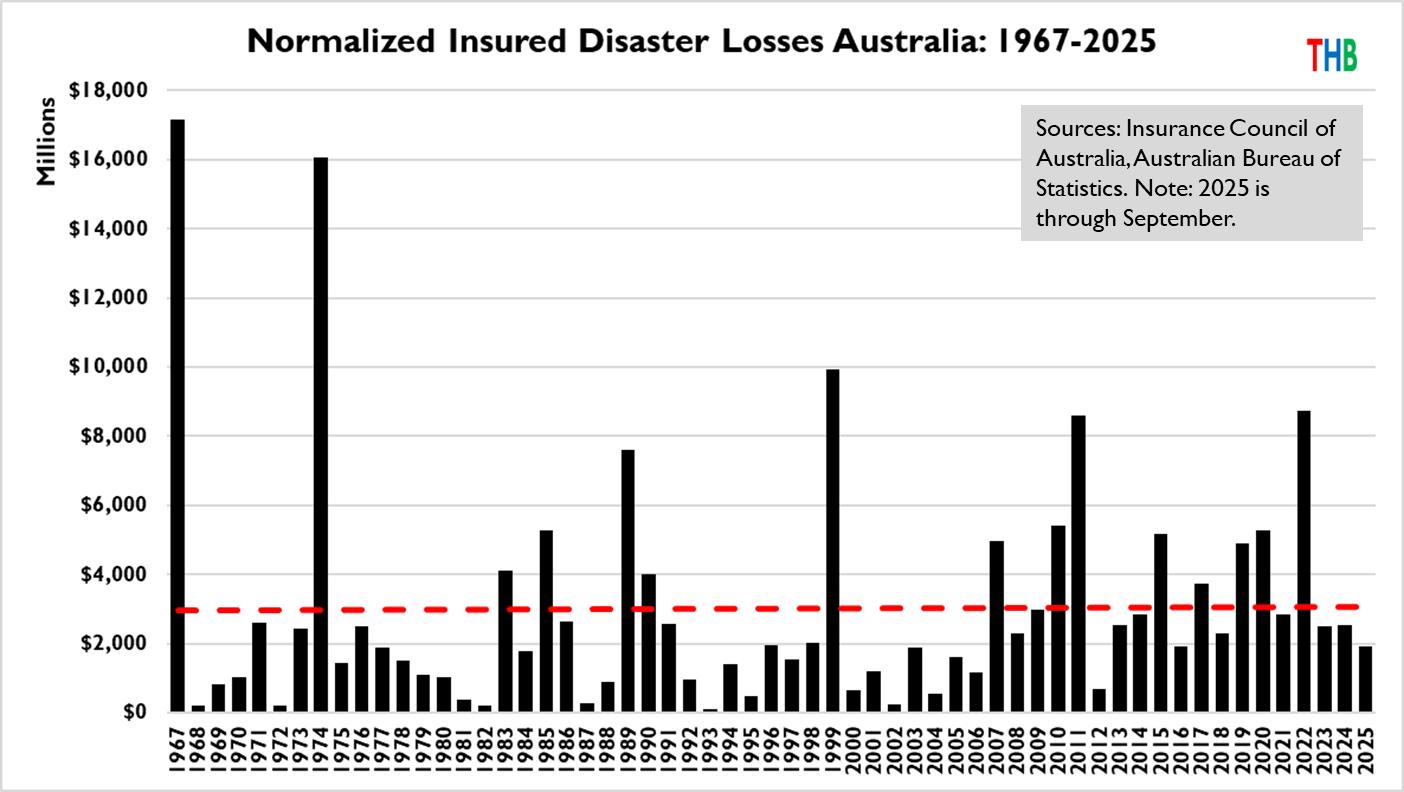When Australia’s National Climate Risk Assessment (NCRA) was released last week, headlines such as the above announced that “climate change could cost Australians $40 billion per year by 2050.”
It turns out that claim is demonstrably false. Let’s take a close look.
The NCRA asserts the $40 billion cost on p. 102:
The Colvin Review (2024) projected disaster costs across each state and territory for flood, bushfire, storm, cyclone and hailstorm for a moderate emissions scenario may total an annual cost of approximately $40.3 billion by 2049–50 (median value).
However, the Colvin Review actually says no such thing.
Here is what it does say (p.13):
Based on average estimates in 2023-24 real dollars, the forecast total economic cost of natural disasters across Australia in 2023-24 is $11.8 billion and is predicted to increase to $40.3 billion in 2049-50. The 2049-50 cost of $40.3 billion considers the anticipated underlying growth in the impact of natural disasters due to factors including increased population, and number and average size of dwellings at risk. These cost estimates do not consider underlying impacts of climate change.
The NCRA implied that Colvin Review projected future disaster costs under a “moderate emissions scenario” when in fact the Colvin Review only considered societal factors. For a formal government assessment this is, at best, incredibly sloppy.
If I were a reporter who breathlessly promoted the false statistic or a member of the public who digested it, I’d be pretty upset and being hoodwinked.
The figure below shows normalized Australian insured disaster losses from 1967 to 2025. [1] There is no overall trend, once losses are adjusted for societal changes. [2] The methodology is based on our 2019 paper:
McAneney, J., Sandercock, B., Crompton, R., Mortlock, T., Musulin, R., Pielke Jr, R., & Gissing, A. (2019). Normalised insurance losses from Australian natural disasters: 1966–2017. Environmental Hazards, 18(5), 414-433.

How will extreme events change in the future with climate change in Australia?
The answer is that we don’t know.
Andy Pitman, a brave climate scientist at the University of New South Wales and Director of the ARC Centre of Excellence for Climate Extremes, explained last week after also reading the NCRA report:
[W]e do not know what the future holds for riverine flooding, tropical cyclones, storms, and droughts. Think about that for a moment … we do not have confident projections for these things.
We do know however that disaster losses will increase simply due to more people, more property, more wealth. The future climate will see many extremes with or without climate change. Those factors alone mean that we know plenty enough to act in the face of an uncertain future.
My post yesterday on problems with climate sceanrios in the NCRA went viral, and was featured on the front pages of several Australian national newspapers (in somehwat more colorful language than you’ll find here at THB!).
Welcome new readers!
For those who have just found THB — To be clear: Climate change is real and serious. Smart policies for mitigation and adpatation make excellent sense. Neither of these two statements justify compromising scientific integrity or sloppy work in formal assessments.
Climate research and assessment are too often engaged as political team sport. They should not be.
[1] The ICA asked me to include their disclaimer: “The Insurance Council of Australia (ICA) shares the data in its Data Hub on the terms set out in the Disclaimer on our website. The content on our website and Data Hub cannot be commercially exploited and if an extract is copied for non-commercial use you must attribute it to the ICA. All intellectual property belongs to the ICA and we expressly reserve all copyright and trademark rights.
The data is a summary of information provided by ICA members to the ICA on insured catastrophe events. The ICA makes no representation or warranty as to the adequacy, accuracy, reliability, currency or completeness of the information made available. The information shared should not be used as the basis for any decision without prior professional advice and careful contextual analysis. The ICA is not liable for damages arising from any decisions that third parties may take on the basis of this information.”
[2] I used the normalization dataset from Insurance Council Australia (ICA), which I adjusted to 2025 values using GDP data from the Australian Bureau of Statistics. The original methods for normalization are described in McAneney et al. 2019.